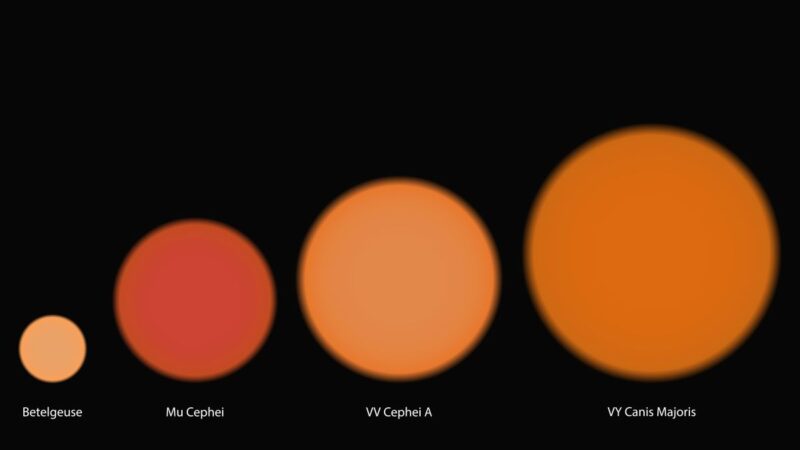[NTDTV, Beijing time, July 07, 2022]Scientists have discovered that the most massive star in the Milky Way is dying. This provides scientists with a rare opportunity to understand the life cycles of such stars.
VY Canis Majoris (VY Canis Majoris) is a red hypergiant star located in the constellation Canis Major, about 3,900 light-years away from the earth, with a mass more than a thousand times that of the sun and the mass of the Milky Way known so far. the largest star.
Researchers at the University of Arizona recently discovered from the molecular components emanating from its outer shell that the giant star is dying.
Stars of this mass are rare, and in fact, there are only a handful of such giant stars known to scientists so far. One is Betelgeuse in the constellation Orion that people often heard about a few years ago. A few years ago, scientists discovered that its brightness had changed drastically, and they once thought it was about to explode as a supernova. The other is NML (NML Cygni, or V1489 Cygni) in the constellation Cygnus. Because they are so few in number, scientists know very little about these giant stars, what astronomical events usually take place as they die, and what celestial bodies they will evolve into.
Now, VY Canis Major gives astronomers a good opportunity to observe. Researchers at the University of Arizona have created the first-ever analytical map of the giant star’s shell composition by analyzing the molecular composition of its shell volatiles.
Previously, most scientists thought that supernova events occurred when such massive stars died. But it doesn’t necessarily look like that now.
Lucy Ziurys, a researcher at the University of Arizona who was one of the main participants in the study, said no one had ever photographed the largest star in the Milky Way, or any similar red supergiant. full photo.
One of the most intriguing differences between VY Canis Majoris, or other red supergiants, and low-mass ordinary stars is that low-mass stars swell their shells as they approach death, so they remain spherical; while red supergiants In the late stage of life, a large amount of material is thrown out from time to time, forming various forms of material structures such as arches, clumps or kinks around the giant star.
Zures and several colleagues believe that VY Canis Major and other red supergiants may have quietly turned into black holes when they died. While the possibility of supernova explosions is also possible, Zurris said that if all red supergiants died as supernovas, scientists should have observed more supernova events.
But there aren’t actually that many supernova events, so it’s likely that these red supergiants just turned into black holes when they died. Of course, scientists are still gathering more data to confirm whether this is the case.
According to their theory, researchers at the University of Arizona constructed an evolutionary model of VY Canis Major, which will be compared with the observed actual fate of VY Canis Major in the future.
The researchers presented their results on June 13 at the 240th meeting of the American Astronomical Society in California.
(Transfer from The Epoch Times/Editor-in-charge: Ye Ping)
URL of this article: https://www.ntdtv.com/b5/2022/07/06/a103472772.html
